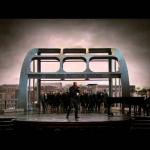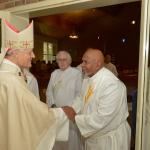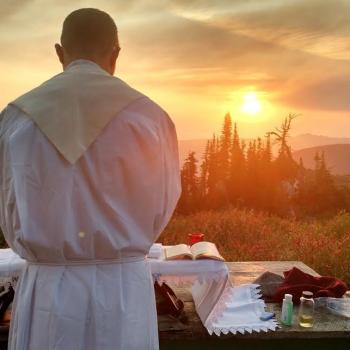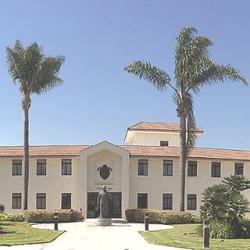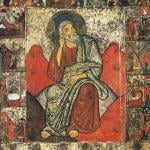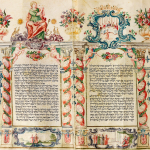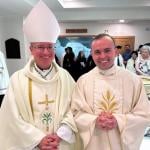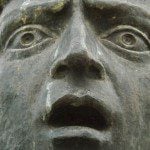While visiting midtown Manhattan Monday night to see the Christmas lights, I dropped by St. Patrick’s Cathedral and encountered a very different kind of light: a saint for our times, nestled next to Mary’s Chapel and the tabernacle containing the Blessed Sacrament.
It’s the cathedral’s newest shrine, to St. Sharbel (or, as some spell it, Charbel).
We’ve reported on this wonderworker in Aleteia in the past, and noted his ardent following. But shrines to him are few and far between in this country’s Latin-rite churches. That may be changing, though, and his prominent presence at one of the iconic Roman Catholic cathedrals of North America could signal that the name Sharbel may one day become as familiar to the faithful as Pio.
From the St. Patrick’s website:
[The cathedral’s] most recent chapel honors the Catholic Maronite Saint Sharbel Makhlouf, O.L.M., a monk and priest from Lebanon whose profound spirituality touched hearts the world over with the Gospel message that interior communion with God is not only possible, but the privilege of all Christians. The Chapel of Saint Sharbel consists of a hand-crafted mosaic depicting Saint Sharbel in the mountains of Lebanon, near the Monastery of St. Maron, with a landscape of thriving cedars and crystalline Mediterranean waters denoting a life in the Spirit. At the center of the chapel is a niche with a kneeler and a table displaying first-class relics of Saint Sharbel. This niche opens from the center of the Mosaic, inviting visitors to enter into the reverential silence that this renowned Saint perfected in his remote mountain hermitage; an interior silence that so many people in urban centers seek today.
Saint Sharbel is known for his monastic spirituality and miraculous gifts of healing. In addition to his native country of Lebanon, St. Sharbel also inspires devotion among Catholics in Europe, the Middle East, and throughout Latin America.
About his life:
Born into humble circumstances in Lebanon during 1828, Yussef Antoun Makhlouf was the youngest of Antoun Zaarour Makhlouf and Brigitta Elias al-Shediyaq’s five children. Antoun, who had been taken away from the family and forced into hard labor, died when his youngest son was only three.
Yussef studied at the parish school and tended to his family’s cow. Engaged in prayer and solitude from a early age, he spent a great deal of time outdoors in the fields and pastures near his village, contemplating God amid the inspiring views of Lebanon’s valleys and mountains.
His uncle and guardian Tanious wanted the boy to continue working with him, while his mother wanted him to marry a young woman. Yussef had other plans, however, and left home in 1851 without informing anyone.
Yussef would become “Brother Charbel,” after making a pilgrimage on foot to his new monastic home. In this, he followed the example of his maternal uncles, who were already living as solitary monks at the Hermitage of Saint Paul in the Qadisha Valley.
Charbel took his monastic vows in November of 1853, during a solemn ceremony which was closed to the public and off-limits even to his family. He subsequently studied for the priesthood and was ordained, returning to the Monastery of St. Maron.
The priest-monk lived and served in the monastery for 19 years, showing great devotion to the life of prayer, manual work, and contemplative silence.
Charbel’s superiors observed God’s “supernatural power” at work in his life, and he became known as a wonder-worker even among some Muslims. In 1875, he was granted permission to live as a solitary monk in a nearby hermitage dedicated to Saints Peter and Paul.
After his death, on Christmas Eve in 1898, the wonders continued:
A few months after his death, a bright light was seen surrounding his tomb and the superiors opened it to find his body still intact. Since that day, a blood-like liquid flows from his body. Experts and doctors are unable to give medical explanations for the incorruptibility and flexibility. In the years 1950 and 1952, his tomb was opened and his body still had the appearance of a living one. The official site mentions: In this century his grave has been opened four times, the last time being in 1955, and each time “it has been noticed that his bleeding body still has its flexibility as if it were alive”; no mentioning of later openings. The Catholic Tradition website says: Father Joseph Mahfouz, the postulator of the cause, certified that in 1965 the body of Saint Charbel was still preserved intact with no alteration. In 1976 he again witnessed the opening of the grave; this time the body was completely decomposed. Only the skeleton remained.
…On October 9, 1977, Pope Paul VI presided at the canonization of Blessed Charbel. At the time Bishop Francis Zayek, head the U.S. Diocese of St. Maron, wrote a pamphlet entitled “A New Star of the East.” Bishop Zayek wrote: “St. Sharbel is called the second St. Anthony of the Desert, the Perfume of Lebanon, the first Confessor of the East to be raised to the Altars according to the actual procedure of the Catholic Church, the honor of our Aramaic Antiochian Church, and the model of spiritual values and renewal. Sharbel is like a Cedar of Lebanon standing in eternal prayer, on top of a mountain.” The bishop noted that Sharbel’s canonization plus the beatification causes of others prove “that the Aramaic Maronite Antiochian Church is indeed a living branch of the Catholic Church and is intimately connected with the trunk, who is Christ, our Savior, the beginning and the end of all things.”
A great number of miracles have been attributed to Saint Charbel since his death. The most famous one is that of Nohad El Shami, a 55-year-old woman at the time of the miracle who was healed from a partial paralysis. She tells that on the night of January 22, 1993, she saw in her dream two Maronite monks standing next to her bed. One of them put his hands on her neck and operated on her, relieving her from her pain while the other held a pillow behind her back. When she woke she discovered two wounds in her neck, one on each side. She was completely healed and recovered her ability to walk. She believed that it was Saint Charbel who healed her but did not recognize the other monk. Next night, she again saw Saint Charbel in her dream. He said to her: “I did the surgery to let people see and return to faith. I ask you to visit the hermitage on the 22nd of every month, and attend Mass regularly for the rest of your life”. People now gather on the 22nd of each month to pray and celebrate the Mass in the hermitage of Saint Charbel in Annaya.
His feast day on the Roman calendar is July 24.
During our time, the world could use a powerful intercessor in the Middle East—one who can bridge differences and heal the suffering of people in that corner of the world.
From a novena to him:
Oh, Miraculous Saint Sharbel, whose body overpowers corruption, emanates the scent of heaven, come to my rescue and grant me from God the grace which I am in need of (name the grace). Amen. Oh, Saint Sharbel, pray for me. Oh Lord, who has bestowed upon Saint Sharbel the grace of faith, I plead to you to grant me through his intercession that divine grace to live according to Your commandments and Bible. The Glory is Yours until the end. Amen.
St. Sharbel, pray for us!
Photo: Deacon Greg Kandra

